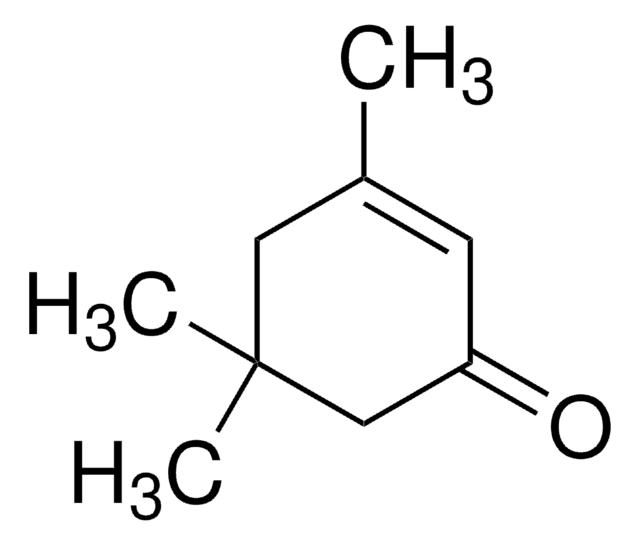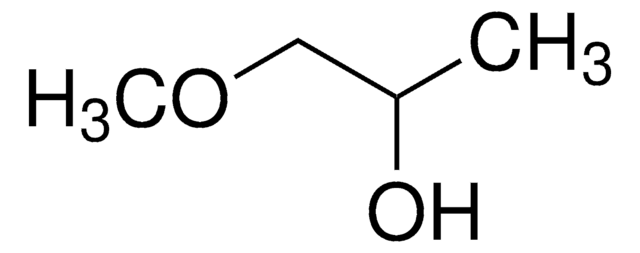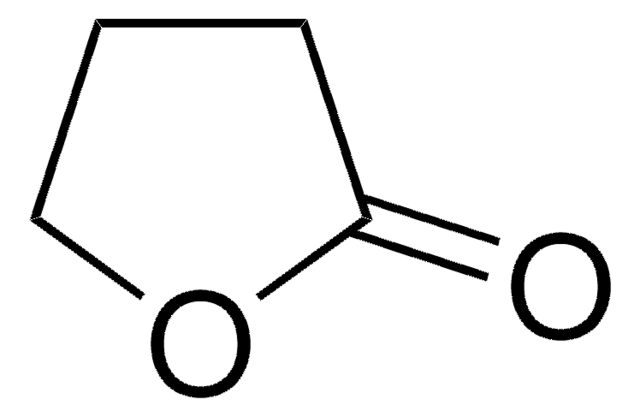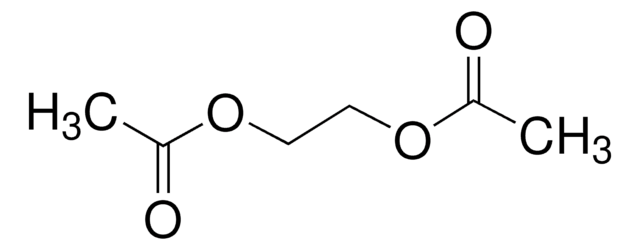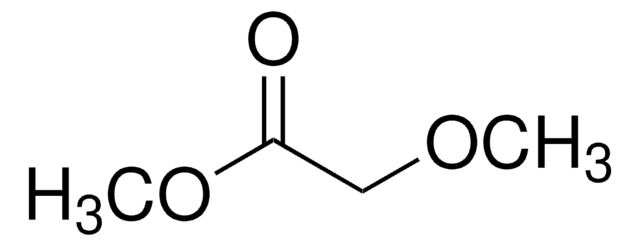Wichtige Dokumente
109967
2-Ethoxyethyl-acetat
98%
Synonym(e):
1-Acetoxy-2-ethoxy-ethan, Cellosolve® acetat, Ethylenglykolmonoethyletheracetat, Ethylglykolacetat
About This Item
Empfohlene Produkte
Dampfdichte
4.6 (vs air)
Qualitätsniveau
Dampfdruck
2 mmHg ( 20 °C)
Assay
98%
Form
liquid
Selbstzündungstemp.
715 °F
Expl.-Gr.
13 %
Methode(n)
microbiological culture: suitable
Brechungsindex
n20/D 1.403-1.409
n20/D 1.406 (lit.)
bp
156 °C (lit.)
mp (Schmelzpunkt)
−61 °C (lit.)
Löslichkeit
H2O: soluble about 6 parts
Dichte
0.975 g/mL at 25 °C (lit.)
Funktionelle Gruppe
ester
ether
SMILES String
CCOCCOC(C)=O
InChI
1S/C6H12O3/c1-3-8-4-5-9-6(2)7/h3-5H2,1-2H3
InChIKey
SVONRAPFKPVNKG-UHFFFAOYSA-N
Suchen Sie nach ähnlichen Produkten? Aufrufen Leitfaden zum Produktvergleich
Anwendung
Rechtliche Hinweise
Signalwort
Danger
Gefahreneinstufungen
Acute Tox. 4 Dermal - Acute Tox. 4 Inhalation - Acute Tox. 4 Oral - Flam. Liq. 3 - Repr. 1B
Lagerklassenschlüssel
3 - Flammable liquids
WGK
WGK 2
Flammpunkt (°F)
129.2 °F - closed cup
Flammpunkt (°C)
54 °C - closed cup
Persönliche Schutzausrüstung
Eyeshields, Faceshields, Gloves, type ABEK (EN14387) respirator filter
Hier finden Sie alle aktuellen Versionen:
Besitzen Sie dieses Produkt bereits?
In der Dokumentenbibliothek finden Sie die Dokumentation zu den Produkten, die Sie kürzlich erworben haben.
Kunden haben sich ebenfalls angesehen
Unser Team von Wissenschaftlern verfügt über Erfahrung in allen Forschungsbereichen einschließlich Life Science, Materialwissenschaften, chemischer Synthese, Chromatographie, Analytik und vielen mehr..
Setzen Sie sich mit dem technischen Dienst in Verbindung.

